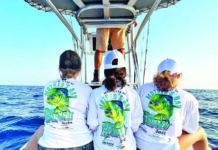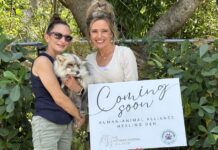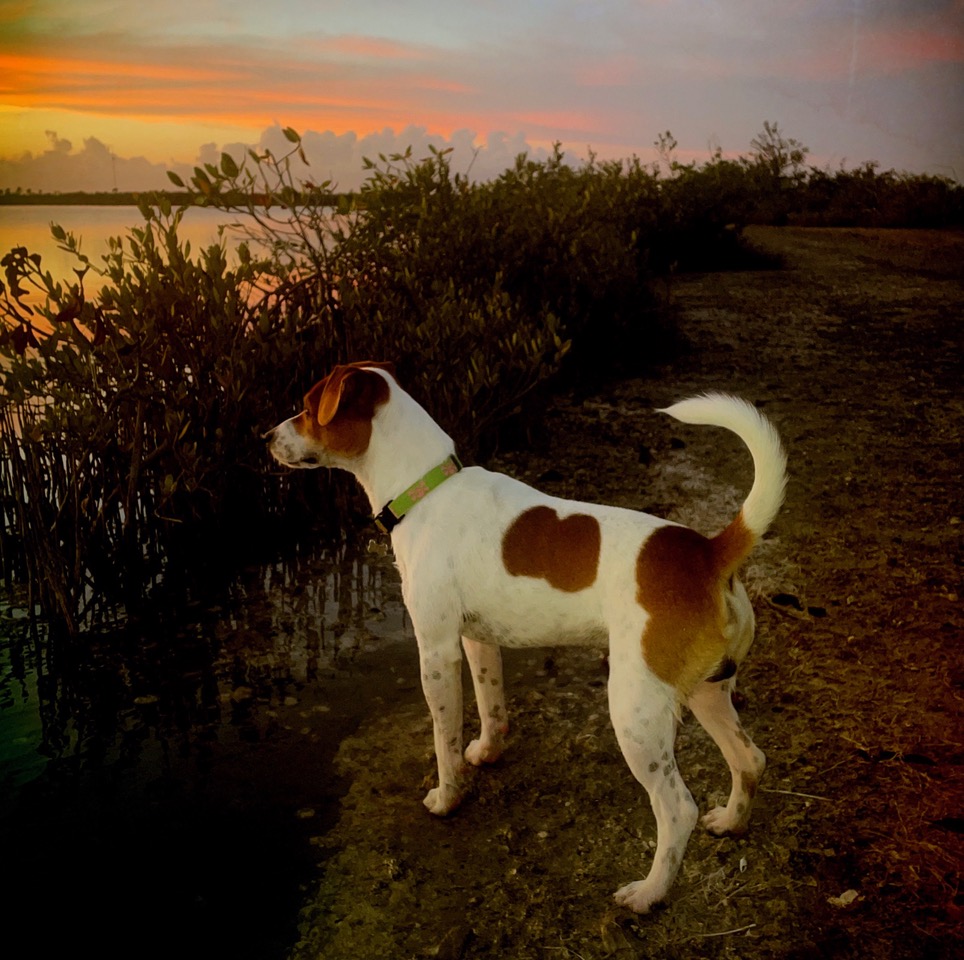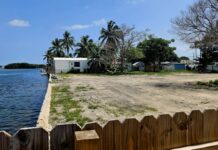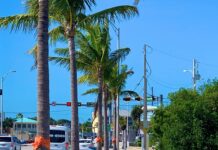As soon as I pulled into the driveway, the barking started. It was high-pitched, incessant and coming from a bouncing ball of canine energy that looked a lot like Vincent, the dog in the magnificent sunset-drenched photos taken by his owner, Cudjoe Key photographer Lynne Bentley-Kemp.
In those photos, Vincent is a dog-god, gazing over the cloud-reflected waters as if he owns the place. But the dog in Lynne’s yard seemed a typical terrier — white body, reddish-brown spots, assertive personality. And that bark.
“Jack Russell?” I asked, as I dug out a treat for my new friend.
“No,” Lynne said. “Danish-Swedish farmdog.”
I looked closer. This dog was different. Bigger than a typical Jack with a squarer, more sturdy body. But still, in all my years of obsessively watching televised dog competitions, I’d never heard of anything like a Danish-Swedish farmdog.
Lynne was not surprised. Originally from Denmark and Sweden, the breed is relatively rare in this country. They were bred to be all-around farm dogs that could provide multi-dog services in one compact canine body.
“They can herd, they can hunt, they can protect,” Lynne said. “Their job was to do whatever was needed on the farm.”
But Lynne lived on a canal, not a farm. She needed a dog that could swim, could pull himself up on canal ramps. A dog that could trek through the backcountry and ride a stand-up paddleboard. In other words, an island dog.
Vincent’s breeder made notes of Lynne’s wish list, then told her she would pick the dog for her. After closely observing the pups in the litter, she zeroed in on a suitable candidate, and because Lynne had said she wanted a dog who could paddleboard with her, created a special puppy-size swinging board for him in the pen. “He loved it,” Lynne said. “Even slept in it.”
At seven weeks, her little farm boy arrived in the Keys, with a name, Vincent (after Van Gogh), and much to learn.
The first thing Lynne did was teach him to swim. She started him off in the canal outside her home and he took to it right away. “Now he’ll swim in anything,” she said. “Oceans. Pools. Even puddles.”
Around that time, Vincent met a real paddleboard. All the board work in his puppy pen had paid off. “He loved it,” Lynne says. “Was very enthusiastic.”
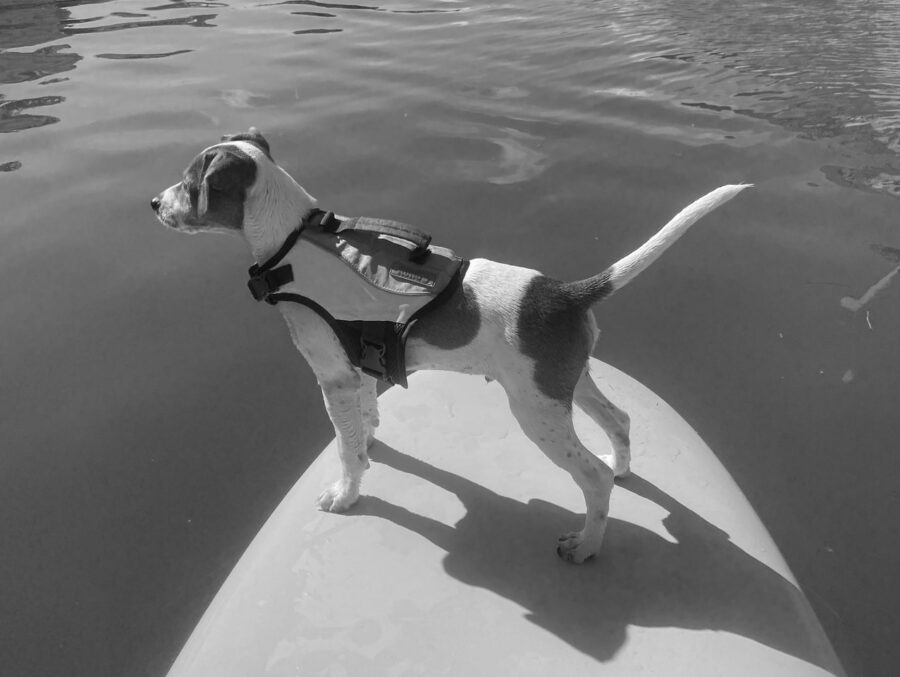
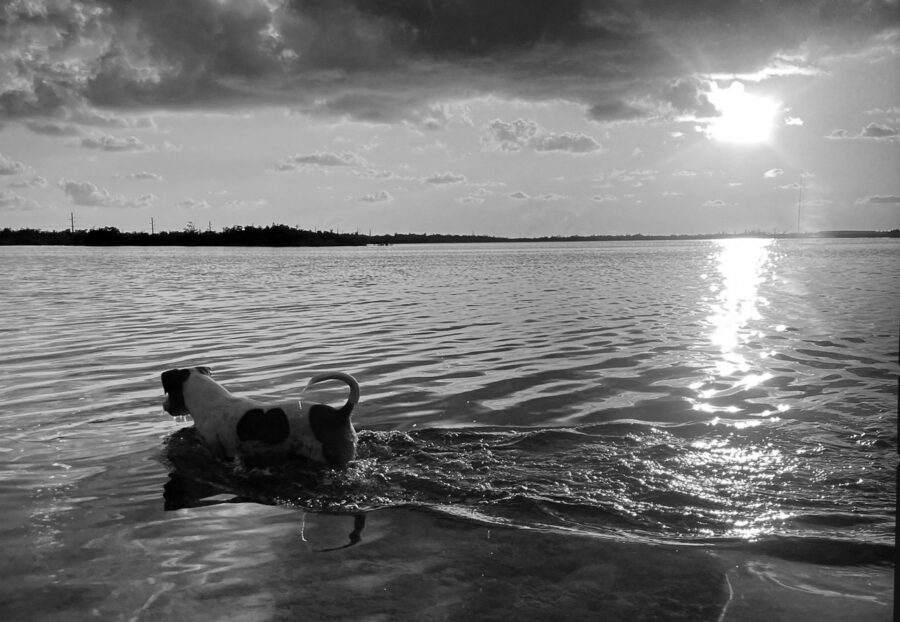
But it’s not all fun and games for this surfer boy. Vincent keeps iguanas off the “farm,” not only chasing them, but climbing after them. Yes. These dogs can climb trees. I’ve seen the pictures and it’s startling.
Roosters are also on his pest removal list. Vincent considers them “iguanas with feathers,” chasing and climbing to keep them from his yard. And rats? After a palm came down near the Kemps’ house, Lynne found five palm rats under her bed.
But perhaps the most extraordinary thing about this dog’s full-tilt island life is Vincent’s and Lynne’s shared love of Keys sunsets. Every evening, as sunset approaches, Vincent begins herding her out the door at just the right time to catch the descent, be it summer, winter, standard or non-standard time.
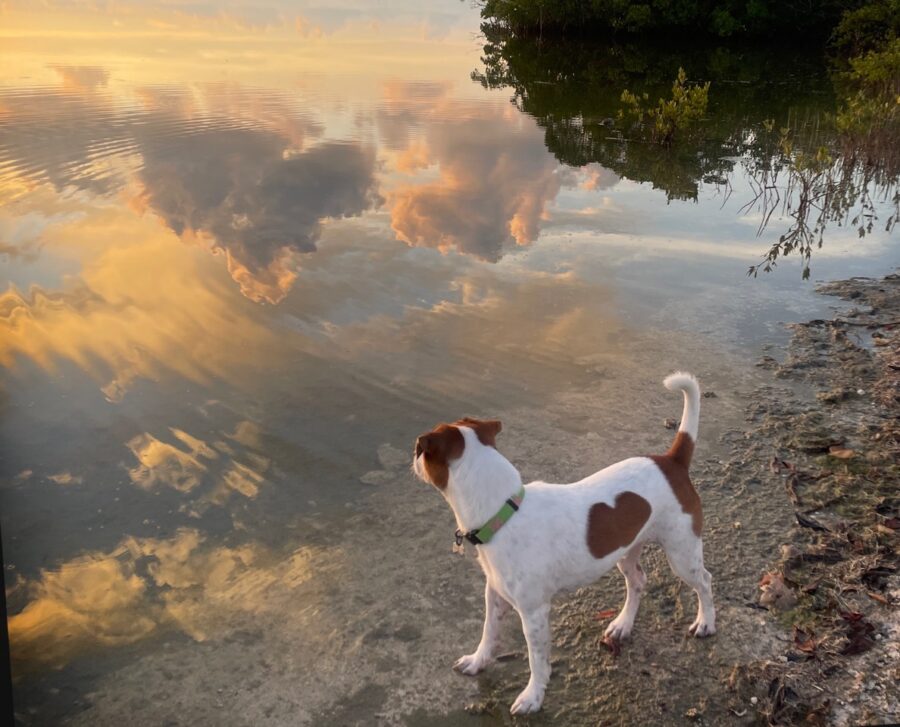
I’ve heard it said that some of the most beautiful sunsets in the Keys happen around the waters off Cudjoe Key and after viewing Lynne’s pictures, I must agree. Or maybe it’s something more, this shared awe between dog and person, standing there before the immense beauty of sunset in this special place.
While all the sunset pictures are breathtaking, the ones featuring Vincent — tramping through the flats, gazing across the water, or simply being a dog in nature — elevate these photographs to art. They remind me of classic 18th-century portraits of animals, especially the ones of dogs in action, capturing the intimate relationship between them and the natural world.
These amazing photographs are not a matter of coincidence or pure luck, although some of that may be in play. Bentley-Kemp is a photographer and master artist behind the camera. She has even taught Vincent how to pose. But only briefly. “I have to be quick,” she says. “He won’t stand there long.”
Vincent truly is a sort of dog-god out there on the flats, enjoying water and wilderness in a way only a dog can. He even has his own sunset stick collection. Each evening, when it’s time to go, he leaves his “stick o’ the day” in a special pile he keeps on the shore. When they return, he knows just where to find his “toys.”
Although the breed is not yet officially recognized at the American Kennel Club, they can compete in the “Miscellaneous” category at competitions, which Vincent did last summer at the AKC Nationals in Orlando. Although he was nervous at first, Lynne said he adjusted well to the demands of show life, taking both elevators and directions in the show ring in stride. Pretty good for a guy that’s basically still a puppy at 2 ½ years and a country boy at heart.
With only 300 Danish-Swedish farmdogs in the U.S., it’s with noting four of them live in the Keys. Statistically, that’s a high concentration, but it makes sense. The Keys are a wild and special part of the world. It takes a special kind of being — dog and human — to live here. Adaptability is key, and these dogs have it in spades.
I asked Lynne what she likes best about Vincent. “Well, he’s handsome,” she says, laughing. “And he gets me.”
And what annoys her the most? She didn’t hesitate. “That bark. You should hear him when he sits in the trees and screams at the iguanas.”
Maybe that’s not what a typical Danish-Swedish farmdog does. But Vincent is, after all, not a farm dog.
He’s an island dog — and loves every minute of it.




